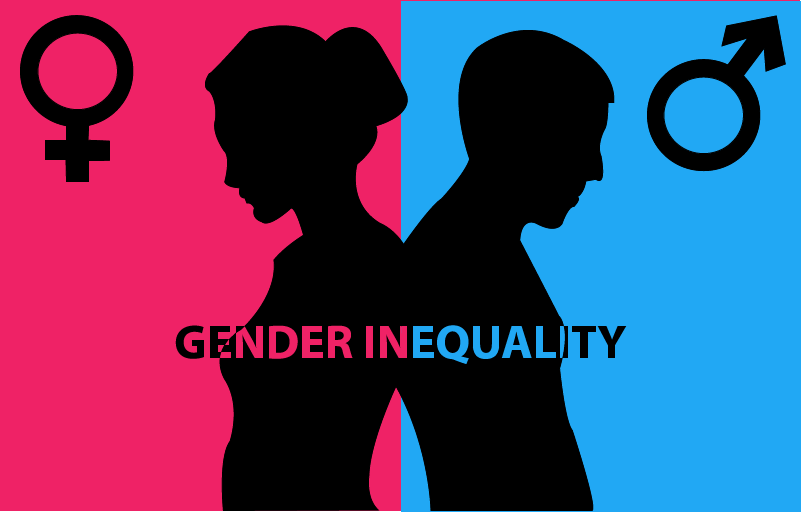 Iuliana Mihai is a Ph.D. student and research assistant at the Economics Department of the University of A Coruña in Spain nad visiting researcher at the IEE-ULB. Her research focuses on the cultural and labour market aspects of European migration.
Iuliana Mihai is a Ph.D. student and research assistant at the Economics Department of the University of A Coruña in Spain nad visiting researcher at the IEE-ULB. Her research focuses on the cultural and labour market aspects of European migration.
The COVID-19 crisis and gender inequality
Some facts and reflections on the impact of Covid-19 on global gender inequality
Drivers of gender inequality
A gender gap is a difference between women and man as reflected in a specific life domain: economic, social, cultural, political, intellectual, etc. It is a well-known fact that even before the Covid-19 pandemic, most countries struggled to bring solutions to gender disparities. On the one hand, there are the achievements promoting gender equality: a better representation of women in politics, equal treatment legislation, and better healthcare.
On the other hand, gaps between genders still remain, due to uneven access to education, lack of employment equality, lack of legal protection against gendered based violence, racism, etc. Another important but less tangible cause of its persistency stands in societal mindsets and cultural beliefs about gender. In this regard, Ogburn’s concept of cultural lag (Allen, 1965) – the idea that changes in non-material culture (e.g., shared cultural beliefs) frequently lags behind changes in material culture – provides us with a meaningful explanation of the persistence in gender inequalities.
COVID-19 crisis risks deepening gender gaps
As indicated by several UN reports (Rivera et al., 2020; United Nations, 2020), the Covid-19 pandemic is deepening the pre-existing inequalities in four dimensions:
- In the labor market, by increasing the risk of working in the health sector given that, globally, women constitute 70% of the workers in the health and social sector, and more than 85% work as nurses. Moreover, a higher proportion of women may lose their jobs given their overrepresentation in the informal sector and in specific sectors, such as accommodation and food services, garment sector, administration, distributive trades sector, which have been identified as among the worst hit by the COVID-19 pandemic.
- In reproductive health, by increases in maternal mortality and morbidity, adolescent pregnancies, HIV and sexually transmitted diseases (the probability of even higher rates in low and middle-income countries where the COVID-19 lockdowns have provoked the shutdown of related services).
- In safe space and balanced care work: widespread lockdowns and quarantine measures have important implications at the household level, as women may be faced with severe food crisis, unbalanced division of unpaid care work and increased risk of gendered-based violence.
- In education, as educational opportunities are hindered by imposed measures of remote education that unravels the unequal access to the Internet and ICT equipment.
EU’s response to gender inequalities during the COVID-19 pandemic
Although many scholars have focused mainly on the impact of the COVID-19 pandemic on the health and the economic sectors, the world did not remain silent about its impact on gender inequalities and the issue has received more attention.
At EU level, many institutions and agencies took important initiatives to provide guidance and raise awareness about the pandemic’s consequences on women. Just to name a few, valuable tools put forward include:
- Binding pay transparency measures and directives addressing the issue of work-life balance (European Commission, 2020a);
- App development for women in emergency situations (European Commission, 2020b);
- Increases in the number of places in violence protection facilities and shelters (European Parliament, 2020);
- Inclusive and gender-responsive measures that assures women’s full participation in the decision-making processes and in the post-epidemic phases of recovery (Council of the European Union, 2020);
- Increased collaboration between police, justice and health sectors in EU member states to manage better the risk of violence against women; data collection harmonization on violence against women between EU member states (The European Institute for Gender Equality, 2020a, 2020b), etc.
Over the past few decades, important progress has been made to achieve gender equality, but many challenges remain. It is an undeniable fact that the road to reaching gender equality is still far away. Some studies (Schwab et al., 2019) suggest that it will take another 99.5 years until the overall global gender gap will close across 107 countries. Considering that this bleak number was put forward before the start of the COVID-19 crisis, one can wonder how many years will be added to those estimations due to the impact of the current pandemic on gender inequalities across the world.
References
Allen, F. R. (1965). William F. Ogburn on Culture and Social Change. Edited with an Introduction by Otis Dudley Duncan. Chicago: The University of Chicago Press, 1964. 360 pp. Social Forces, 43(4), 581–582. https://doi.org/10.2307/2574471
Council of the European Union. (2020). Declaration by the High Representative Josep Borrell, on behalf of the European Union, on human rights in the times of the coronavirus pandemic. https://www.consilium.europa.eu/en/press/press-releases/2020/05/05/declaration-by-the-high-representative-josep-borrell-on-behalf-of-eu-on-human-rights-in-the-times-of-the-coronavirus-pandemic/
European Commission. (2020a). Gender equality strategy. Achievements and key areas for action. [Text]. European Commission – European Commission.
https://ec.europa.eu/info/policies/justice-and-fundamental-rights/gender-equality/gender-equality-strategy_en
European Commission. (2020b). Good Practices for tackling domestic violence in the context of COVID-19 (p. 8). European Commission. https://rm.coe.int/summary-report-webinar-on-domestic-violence-and-covid-19/16809ea45a
European Parliament. (2020, July 4). COVID-19: Stopping the rise in domestic violence during lockdown | News |. https://www.europarl.europa.eu/news/en/press-room/20200406IPR76610/covid-19-stopping-the-rise-in-domestic-violence-during-lockdown
Rivera, C., Hsu, Y.-C., Esbry, F. P., & Dugarova, E. (2020). Gender Inequality and the COVID-19 Crisis: A Human Development Perspective (p. 19) [Human Development Working Paper]. UNITED NATIONS DEVELOPMENT PROGRAMME. http://hdr.undp.org/en/content/gender-inequality-and-covid-19-crisis-human-development-perspective
Schwab, K., Crotti, R., Geiger, T., Ratcheva, V., & World Economic Forum. (2019). Global gender gap report 2020 insight report. World Economic Forum.
The European Institute for Gender Equality. (2020a, March 25). Coronavirus puts women in the frontline. European Institute for Gender Equality. https://eige.europa.eu/news/coronavirus-puts-women-frontline
The European Institute for Gender Equality. (2020b, April 29). EU rights and equality agency heads: Let’s step up our efforts to end domestic violence. European Institute for Gender Equality. https://eige.europa.eu/news/eu-rights-and-equality-agency-heads-lets-step-our-efforts-end-domestic-violence
United Nations. (2020). Policy Brief: The Impact of COVID-19 on Women (p. 21) [Policy Brief]. United Nations. https://www.un.org/sites/un2.un.org/files/policy_brief_on_covid_impact_on_women_9_apr_2020_updated.pdf




